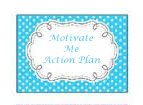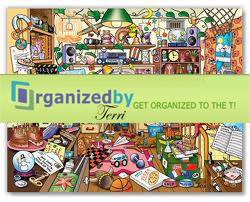
Virtual Organizing
1-Hour Virtual Session $100
Want to do it yourself? Virtual organizing from home with Face Time, Skype, Zoom or Phone

DIY {Motivate Me Action Plan}
Motivate Me [2- hour Session $150]
Do-It-Yourself [Plan of Action] We will assess the space, suggest products and create a plan of action made to order for your space. You do the work and we will follow up by a final email.
6- Winter Indulgences- To Do Now
ORGANIZED BY TERRI ~February 2023 3 MINUTE Read
Every Texan knows that if you don’t like the weather, wait a few minutes and it will change. So this week as the temp’s plummet into the teens and single digits at night with not much of a warm-up during daylight hours. Today was a day to reach for sweaters, fleece, and fur. Those items are only used on occasion, and as I sit and write, have donned the above in layers! So as we look forward with six more weeks of winter this year, try to 'indulge in what is healthy and restorative as we look forward to spring!
* Let the sunshine in! When the temps drop, and the dreary days linger on, pull up the sash and let natures light come in. On sunny days grab a chair and sit in those golden rays. Health benefit of vitamin D production and less chance of developing S.A.D. {seasonal-affective- disorder}
More info:
https://www.nimh.nih.gov/health/publications/seasonal-affective-disorder* Bring out the sweaters Most Texans generally store the heaviest of clothing items contained on a high shelf in those closets or in a cedar chest. We just never know when we might need them, but when we do, we know where to find those cozy layers for a truly winter’s day. Bring them out of mothballs and air them out before storing on closet shelves for easier access. A simple trick to hang sweaters is to tri-fold over the shoulder of a hanger preserving them from those dreaded dimples. Layering clothing is always the best way to keep warm -adding or taking off as needed.
* Humidify with Essential Oils As the home heaters are running more often, the air is drying, and the first evidence is when you reach to touch your pet and you both feel the shock. Adding humidity back into the air is a simple as placing a pot of water on the stove, bring to a boil, lower to simmer and let the steam do its work. Also, there are many humidifiers that will do that job without too much of a watchful eye for refilling and in either case, essential oils of your choice may be added. Healthy benefits in your home when staying inside is a choice.
* Take supplements & hydrate You hear this all the time, right? Now is not the time to forget taking your vitamins & supplements add to that the importance of staying hydrated, preferably with water. Your skin is probably letting you know this in a not so subtle way. Itchy, flaky skin are good signs that your warmer environment is taking its toll. During the extreme weather conditions, lack of sunshine and closed quarters now’s the best time to increase Vitamin C and to continue your regime of healthy habits. Treat yourself with hot drinks {tea, broth for lower calorie intake} to keep your core warm and body hydrated!
* Treat your pet with knowledge that is, it’s not the time for long walks and being left out of doors in the elements. Check out the link for many helpful tips to best care for your four-legged family member: https://www.aspca.org/pet-care/general-pet-care/cold-weather-safety-tips Curling up beside you or nearby is where they want to be!
* Look beyond what’s inside Through open window blinds observe nature in winter. Consider filling bird feeders with seed and placing within sight to enjoy the antics of birds and squirrels. If water is frozen in birdbaths, place a bowl of fresh water in its place. Children can create feeders with hollowed out orange halves filled with seed and attaching a string hanger for tree limbs. Other ideas may be found: https://www.pinterest.com/clutterconsult/wintertime-indulgences/
Share your favorite pins- https://www.pinterest.com/clutterconsult/boards/
Remember Spring is on the way!
Back to School Tips
How can parents organize kids clothing to make school mornings go smoother?
Finding age appropriate systems for each child:
*Young children that are not reading or those that can, do well with color organization. Parents can help their children pair up outfits to place into a daily organizer, This way the decisions have been made before hand and little if any discussion- except identifying the color/day separations, or dramatic weather changes necessitate a change.
*For older children, simply use open bins in a closet or drawers for storage of clothing separating tops and bottoms, underwear and socks. Use an organizing system to keep belts, hats, jewelry and accessories within easy sight and reach, preferably in their closet space. Have them plan the night before what they will wear, making sure all items are clean and pressed and ready to wear. Closet hang space should be easily accessible, and an outside hook could hold an outfit for the next day.
*Make them a part of the process further by providing a laundry hamper in their living space, preferably a closet. Even young children can be taught to use a hamper.
For more information on closet organization and other organizing topics, visit our Pinterest Page: https://www.pinterest.com/clutterconsult/

Identifying Clutter
With Three Easy Questions
What exactly is clutter? Clutter is anything unnecessary and extraneous. It can be more than the physical clutter most of us think of. Getting organized means clearing out the clutter in your mind, heart, and life. As for the physical clutter, ask yourself the following three questions about each item in your home. If you can't answer yes to at least one, it's probably clutter!
1. Is it beautiful? A stunning piece of artwork enriches your life because it brings joy each time you see it. A gorgeous vase full of fresh flowers reduces stress and energizes your spirit.
2. Is it useful? You use your 12-cup coffee maker every day. You couldn't make it through the week without it. (Don't confuse this question with, "Will it be useful someday?")
3. Is it loved? The antique pocket watch from your grandfather is a precious reminder of him. Your favorite cashmere sweater makes you feel fabulous.
You'll find that as you inventory your possessions, you may be able to answer "yes" to two or even three of the questions above. Those are the things that are most valuable to you. Remember, the goal of de-cluttering is not to get rid of everything. It's simply to keep only things that you truly appreciate and use.
To stop clutter, prevent it from accumulating in the first place. Don't give clutter a chance to form. As you've probably experienced, once clutter occupies a space, it has a way of multiplying. Always remember to place your emphasis on quality over quantity. In other words, it's not important to have a lot of things, many of which you never use. It's more beneficial to have fewer things, all of which you use and/or enjoy.
Think before you buy. Try to look beyond the initial "thrill of the purchase" and see what provides deeper moments of meaning. Before you buy, think about the time you'll spend in cleaning, storing, and maintaining that item after you bring it home. If you must buy, establish a "new item in, old item out" system where some purging takes place before shopping.
Once you rid yourself of clutter and make space only for what's special, you'll find it's easier to get - and stay - organized! You'll soon reap the benefits of a clutter-free life: more energy, happier relationships, a well organized home or office, new opportunities, and a better outlook on life.
- A need for Abundance: Buying and storing in bulk: cooking in mass; feeling guilty if you waste something
- Unclear Goals, Priorities: Taking on too much; feeling scattered; bouncing from one thing to another; accumulating things you don’t use.
- Fear of success or failure: Using disorganization to hold yourself back; making excuses rather than taking baby steps forward
- A need to Retreat: Using clutter to provide insulation and a feeling of safety.
- Fear of losing creativity: Believing that chaotic, disorganized surroundings enhance creativity.
- A need for distraction: Creating chaos to ignore larger underlying issues; avoiding things you’d rather not face or deal with.
- Sentimental Attachments: Holding onto the past; not letting go of objects that no longer serve you and that you may not even like
- Perfectionist tendencies: Having unfinished projects; thinking nothing is ever good enough; needing to control
- “Just in case’ clutter: Holding on to things in case you might need them in the future
- Give everything a home. It’s okay to have stuff, but try to keep it in organized locations.
- Narrow things down. Create a system that suits your way of living and thinking so you’ll stick with it.
- Allow yourself to exceed your own expectations-start with small tasks with realistic goals.
- Give yourself a lift. Start with a room you love and keep only what you absolutely love.
- Remember that being organized releases rather than constricts creativity
- Take quiet time for yourself, and focus on what you’ve been neglecting. Reward yourself for noticing.
- Offer furniture and family mementoes to relative that may appreciate or need them more than you. If you don’t like it, give it to someone who does.
- Let others help. Start with a small project and follow through to completion.
- Trust that the universe will provide for you. If you need that item again, trust that it will come to you in some way
Tax Time Tips
What ever time of year you need help getting those important papers together, we are here to help! Here are a few tips to get started:
~Arrange to make a session with yourself to get started on your taxes~
- Set aside a couple of hours to get started
- Go through your checkbook and files to find important items to copy for accounting purposes
- If you already use an accountant, usually a tax preparation document will arrive for you to base your information.
- If necessary, two weeks after this set up one more session for yourself to complete your work.
- You are then prepared to begin your actual preparation or send your information to your accountant.
- Use technology as your assistant
Financial software can rescue you from a potential mistake. - Load Quicken on your computer and begin entering you checking information.
· The programs preset categories are conveniently set so that as you pay your monthly bills, and you are itemizing for taxes too!
File electronically
- File electronically with the IRS, and upon receipt, you will receive confirmation!
.